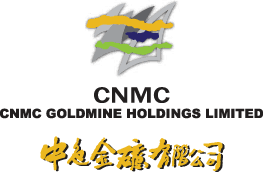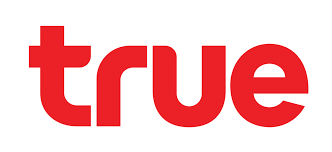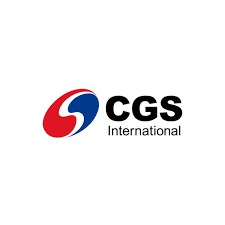US West Coast Refiners and Canadian Crude Imports
Since the Trans Mountain pipeline expansion (TMX) began operating in May, there has been a significant surge in Canadian waterborne exports of light crude to the U.S. West Coast. This trend has surprised market participants who initially believed the pipeline would primarily transport heavy crude to Asia and California. The increase in light crude flows from Canada has displaced imports from Latin American countries, reinforcing the U.S.’s role as a crucial customer for Canadian oil exports.
Waterborne imports of light synthetic and sweet crude into the U.S. West Coast rose to nearly 100,000 barrels per day in September, up from just 7,000 barrels per day in June. Softer prices for synthetic crude, which forms the bulk of the Canadian light grades purchased by U.S. refiners, likely encouraged the surge. Synthetic crude traded at a half-cent-a-barrel premium to West Texas Intermediate crude futures for most of the summer and through September, down from over \$4 in April.
Additional barrels are delivered via tankers, supplementing the roughly 240,000 barrels per day imported into Washington state through the Trans Mountain Puget Sound Pipeline. This increase in Canadian crude imports has allowed Canada to displace medium-sweet barrels from Argentina and Brazil, gaining market share on the U.S. West Coast.
Since the TMX expansion started, Canadian barrels have been the leading waterborne supplier to Washington refineries from July to October. U.S. West Coast refiners see Canadian light crude as a favorable alternative to medium-sour Alaska North Slope crude, with demand for light crude barrels on TMX exceeding market expectations.
Saudi Arabia’s Crude Capacity and Climate Targets
Saudi Arabia remains committed to maintaining its crude capacity at 12.3 million barrels per day, according to Energy Minister Prince Abdulaziz bin Salman. Speaking at the Future Investment Initiative conference in Riyadh, he emphasized that the world’s largest oil exporter would uphold its crude targets while pursuing climate goals. Saudi Arabia aims to monetize every molecule of energy, integrating emission reduction efforts with maintaining crude capacity.
Prince Abdulaziz highlighted Saudi Arabia’s record on emissions and its commitment to updating its national climate pledge under the Paris Agreement to raise its target. The country is set to have a refreshed Nationally Determined Contribution (NDC) next year, with higher targets.
Ukraine’s Winter Grain Sowing Progress
As of October 28, Ukrainian farmers had sown 4.68 million hectares of winter grains for the 2025 harvest, accounting for 90.2% of the expected area. This includes 4.13 million hectares of winter wheat, which generally accounts for 95% of Ukraine’s wheat output each year. However, a record-long drought this summer and early autumn led many farmers to sow grain in dry soil, with only recent rains improving the situation.
Ukraine has completed the 2024 wheat harvest, threshing around 22 million metric tons, the same volume as in 2023. The 2025 winter wheat area is projected to be around 4.5 million hectares.
Danone’s Decision to Cut Brazilian Soy and Its Repercussions
Danone’s announcement to stop sourcing soy from Brazil has sparked strong reactions from Brazilian soybean producers and the government. The French dairy giant’s move is in response to a forthcoming European Union rule requiring companies to prove they are not sourcing from deforested land.
Brazilian farmers, represented by Aprosoja Brasil, criticized Danone’s decision, labeling it as discriminatory against Brazil. The group suggested that Brazilian producers might consider boycotting Danone’s products. Brazil’s agriculture ministry also criticized the EU legislation as arbitrary and punitive, calling for fair treatment in international trade.
The EU Deforestation Regulation, which covers imports of commodities like cocoa, coffee, and soy, is scheduled to take effect on December 30. However, the EU Commission has proposed a 12-month delay. Major traders have vowed to stop sourcing soybeans from newly cleared land in the Amazon rainforest, but soy farming continues to drive deforestation in the nearby Cerrado savanna.
BHP’s Strategic Moves and Climate Goals
BHP has shifted its focus to other growth opportunities after its failed bid for Anglo American earlier this year. The world’s largest miner walked away from a \$49 billion bid to acquire Anglo American in May after being rebuffed three times. BHP Chairman Ken MacKenzie stated that the company had moved on and highlighted BHP’s C\$4.5 billion deal with Canada-listed Lundin Mining to jointly take over developer Filo Corp, aiming to grow its copper holdings in South America.
BHP’s climate action transition plan received 91.77% shareholder support, despite some investors recommending a vote against it due to a lack of details on emissions reduction plans. BHP is slightly ahead of its target of reducing operational emissions by at least 30% by 2030 from 2020 levels, with a long-term goal of achieving net zero operational emissions by 2050.
BHP faced questions about its application to expand the life of its Queensland metallurgical coal mines by up to 93 years. CEO Mike Henry clarified that the expansions were a continuation of operations, emphasizing coal’s role in steelmaking for the foreseeable future.
Baosteel’s Simandou Project and Zero-Carbon Plant
China’s biggest listed steelmaker, Baoshan Iron & Steel (Baosteel), expects the Simandou iron ore project in Guinea to complete infrastructure construction and mine its first cargo by the end of 2025. The project is set to be the world’s largest mine for high-grade iron ore, essential for the green transition in the global steel value chain.
Baosteel, a unit of China Baowu Steel Group, has become a key shareholder in the project. The company aims to optimize its ore blending structure after Simandou starts production. Baosteel’s zero-carbon plant in Zhanjiang, powered by green hydrogen and green electricity, is also set to be completed in 2025.
Baosteel reported a nearly 65% plunge in its third-quarter net profit due to a fall in steel prices. However, its export orders in the first three quarters hit a record high of 4.66 million tons, well on track for its 2024 target of 6 million tons.
Panama Canal’s Efforts to Regain LNG Traffic
The Panama Canal aims to regain vessel traffic carrying U.S. liquefied natural gas (LNG) to Asia. A new reservation system allows shippers to lock in slots, following a 65% decline in LNG traffic. The switch to Europe and long waiting times and expensive transit fees due to severe drought have kept many LNG ships out of the canal.
The canal’s administrator, Ricaurte Vazquez, stated that the challenges of the recent drought were significant. However, a recovery in Asian LNG demand could increase shipments through the canal. A new reservation system and lower costs allowed the canal’s net income to rise by 9.5% to \$3.45 billion in the fiscal year that ended in September.
The canal now offers two transit slots per day for LNG ships, with a long-term reservation system starting in January. Shorter waiting times and set-aside slots for vessels arriving without reservations are expected to improve handling. The canal’s administration is monitoring the expansion of global LNG fleets and new U.S. LNG projects, anticipating larger LNG vessels to pass through Panama’s largest locks in the next 18 months.
Jordan’s Wheat Purchase
Jordan’s state grains buyer purchased about 60,000 metric tons of hard milling wheat from optional origins in an international tender. The wheat was bought from trading house Ameropa at an estimated \$269.00 per ton cost and freight included for shipment in the first half of January 2025. Jordan is expected to issue new tenders to buy 120,000 tons of wheat and 120,000 tons of animal feed barley in the coming days.
South Korea’s NOFI Corn Purchase
Leading South Korean animal feed maker Nonghyup Feed Inc. (NOFI) bought an estimated 136,000 metric tons of animal feed corn from optional origins in an international tender. The corn was bought in two consignments from trading house Olam for 2025 arrival. The first consignment was sought for arrival around January 5, while the second was for arrival around January 20.
Conclusion
This comprehensive analysis highlights the key developments and strategies of major companies in the commodity markets. The trends and decisions made by these companies have significant implications for the global energy, agriculture, and shipping sectors. As market dynamics continue to evolve, these companies’ strategic moves and responses to regulatory changes will play a crucial role in shaping the future of these industries.




